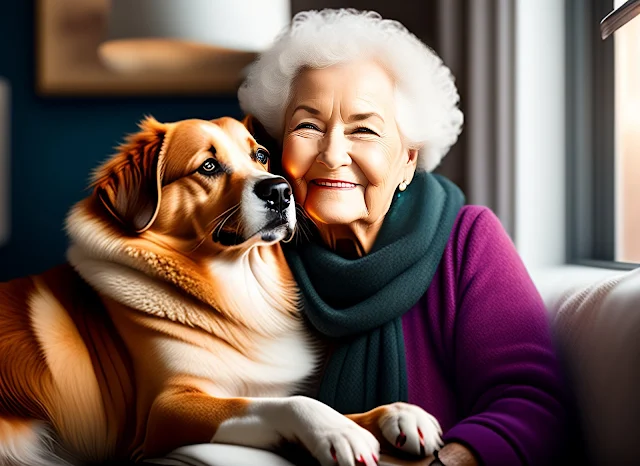The Surprising Health Benefits of Owning Pets for Older Americans
Introduction
As we age, our physical and mental health can decline, leading to feelings of loneliness, depression, and decreased quality of life. However, owning a pet can have a positive impact on the health and well-being of older adults. In this article, we will explore the unexpected health benefits of pets for older Americans, and why they may be the perfect companion for seniors looking to improve their physical, mental, and emotional health.
The Physical Benefits of Pet Ownership
Pets can provide older adults with numerous physical benefits. Firstly, they encourage physical activity, such as walking and playing. Regular exercise can help to improve cardiovascular health, reduce the risk of obesity, and lower the risk of developing chronic conditions such as diabetes and heart disease.
Secondly, pets can provide emotional support and comfort. Studies have shown that pets can have a calming effect on their owners, reducing stress levels and lowering blood pressure. This, in turn, can have a positive impact on overall physical health and well-being.
The Mental and Emotional Benefits of Pet Ownership
Pets can also provide older adults with numerous mental and emotional benefits. Firstly, they can help to combat feelings of loneliness and isolation, which are common in older adults. Studies have shown that pet owners are less likely to experience depression, and they report higher levels of happiness and life satisfaction.
Secondly, pets can provide a sense of purpose and meaning, helping older adults feel valued and needed. This sense of purpose can be especially important for those who have retired and are looking for new ways to stay active and engaged in life.
The Importance of Choosing the Right Pet
When choosing a pet, it is important to consider the individual needs and circumstances of the senior. For example, dogs may be more suitable for those who can provide regular exercise, while cats may be better suited for those who have limited mobility.
It is also important to consider the cost and time commitment involved in owning a pet. For example, dogs may require more time and attention than cats, and they may be more expensive to care for in terms of food, grooming, and veterinary care.
The Benefits of Different Types of Pets
Each type of pet has its own unique benefits and characteristics, making them suitable for different types of older adults. Here are some of the most popular types of pets for older Americans:
Dogs
Dogs are known for their loyalty and affection, making them ideal companions for older adults. They provide their owners with a sense of security and protection, and they encourage physical activity through walks and playtime.
Cats
Cats are known for their independence and low maintenance, making them ideal for seniors who have limited mobility or who are looking for a less demanding pet. They are also affectionate and can provide comfort and companionship for their owners.
Birds
Birds are intelligent and interactive, providing their owners with a sense of entertainment and stimulation. They are also low maintenance, making them ideal for seniors who are looking for a pet that is easy to care for.
Fish
Fish are peaceful and calming, providing their owners with a sense of relaxation and tranquility. They are also low maintenance, making them ideal for seniors who are looking for a pet that requires minimal care and attention.
Conclusion
In conclusion, owning a pet can provide older adults with numerous physical, mental, and emotional benefits. From reducing feelings of loneliness and depression to improving cardiovascular health, pets can have a positive impact on the health and well-being of older Americans. When choosing a pet,




Join the conversation
What's your favorite way to incorporate healthy habits into your daily routine?